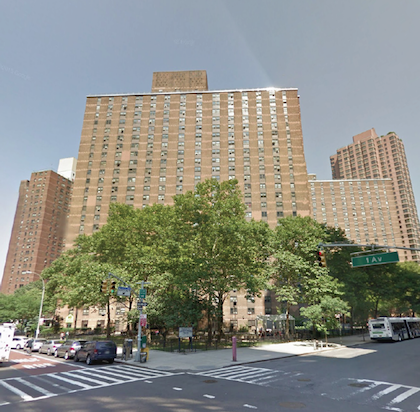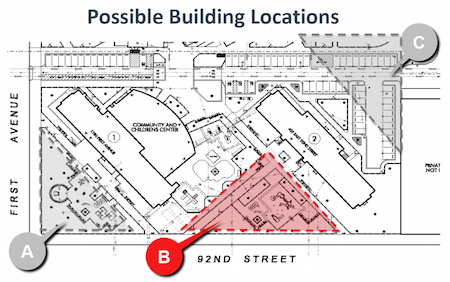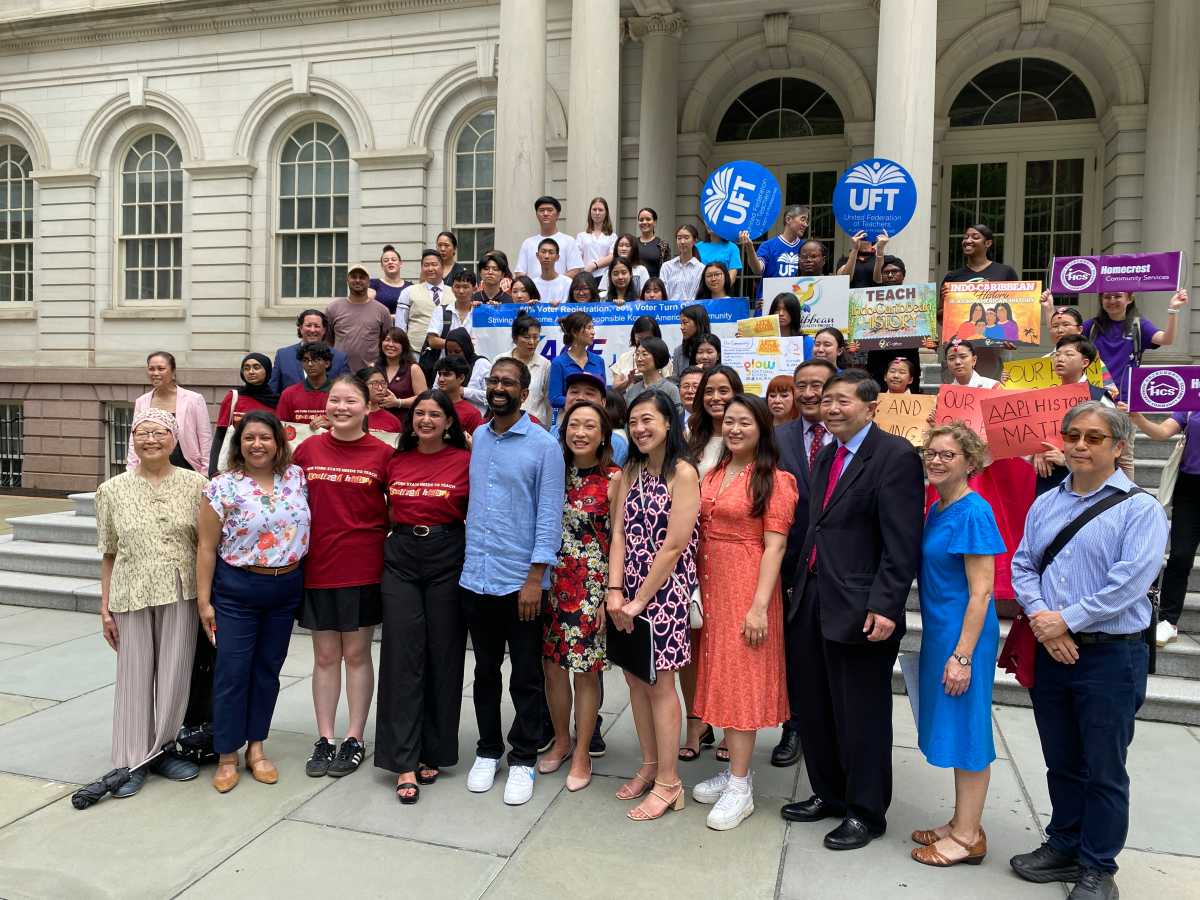
BY JACKSON CHEN | The New York City Housing Authority will create a stakeholder committee that will work closely with the developer of an Upper East Side infill project expected to displace a playground on the grounds of a public housing development.
Holmes Towers, at 403 East 93rd Street, was chosen — along with Brooklyn’s Wyckoff Gardens — as a pilot for NYCHA’s NextGen Neighborhoods. The program aims to create new residential units on public housing properties through the development of a 50-50 split of market-rate and affordable units. The revenue generated from such projects will be applied to offset the agency’s yawning deficit.
At Holmes Towers, the NextGen building planned would be close in height to the two 25-story public housing towers there and would replace the existing playground that serves the more than 900 residents.
After NYCHA selected Holmes Towers last fall, the residents’ reception was staunchly cynical. Many were infuriated at the loss of their playground and the addition of new private housing, without any specific guarantees about resolving much-needed repairs in their own units. Since then, the agency has held several of what it characterizes as visioning meetings with residents, where the needs for a fitness center and a healthcare facility within the new building were identified.
In trying to better their relationship with the Holmes residents, NYCHA announced during its March 22 general public meeting there that it plans to soon create a Holmes NextGen Neighborhoods Stakeholder Committee. According to Melanie Hart, NYCHA’s executive vice president of community programs and development, the committee would include Holmes residents, local community-based organizations, elected officials, and any other impacted people, allowing them to work directly with the developer of the 50-50 project.
To better represent the resident population, Hart explained, NYCHA is looking for diverse candidates, from seniors to young adults, to be a part of the committee, which would hold scheduled meetings with NYCHA and the developer.
“This is an opportunity to engage long term,” Hart said. “Once the developer is actually selected, we will want to be able to make sure information is being shared between developer and community.”
Regardless of this most recent initiative by NYCHA, the majority of residents still disapprove of the infill project overall, according to Sandra Perez, president of the Holmes Towers Resident Association.
“We’re willing to listen to whatever plans they have or however they want to discuss it,” Perez said. “We’re going to give them the benefit of the doubt and see what they’re offering, but I don’t think it’s going to change our mind or opinion.”
Perez said her fellow residents’ main gripes with the project relate to the air quality problems the construction would introduce and the overcrowding additional residents would bring to their community.
When asked if she would consider joining the stakeholder committee, Perez expressed hesitancy and doubt, but added it was too early in the process to tell.

While NYCHA has already settled on the development’s location being on East 92nd Street, between the two Holmes Towers, Perez said none of the options that had been discussed was ideal. The other two alternatives previously considered — one close to the corner of First Avenue and East 92nd Street, the other closer to East 93rd Street and the FDR Drive — were cast aside because, according to NYCHA, a majority of residents said the location between the two towers was their preference.
Holmes resident Yolanda Cancell said there are still many residents who were against the location between the towers but have not voiced their opinion on site selection.
“People definitely don’t want it at all,” Cancell said. “But if we have to have it, we definitely don’t want it anywhere near us.”
Cancell said she felt NYCHA should have stressed the seriousness of their many meetings because many residents who didn’t attend mistakenly thought the agency wouldn’t continue with the project without their approval.
Though Cancell said she would reluctantly join the agency’s stakeholder committee, she remains unsure if she or the committee could have any impact on the development process.
In the meantime, NYCHA is set to release its request-for-proposals as early as the end of the month. According to its current timeline, the agency would evaluate the proposals received over the summer and select a developer in the fall. As for the stakeholder committee, NYCHA expects it to meet for the first time on May 31.



























